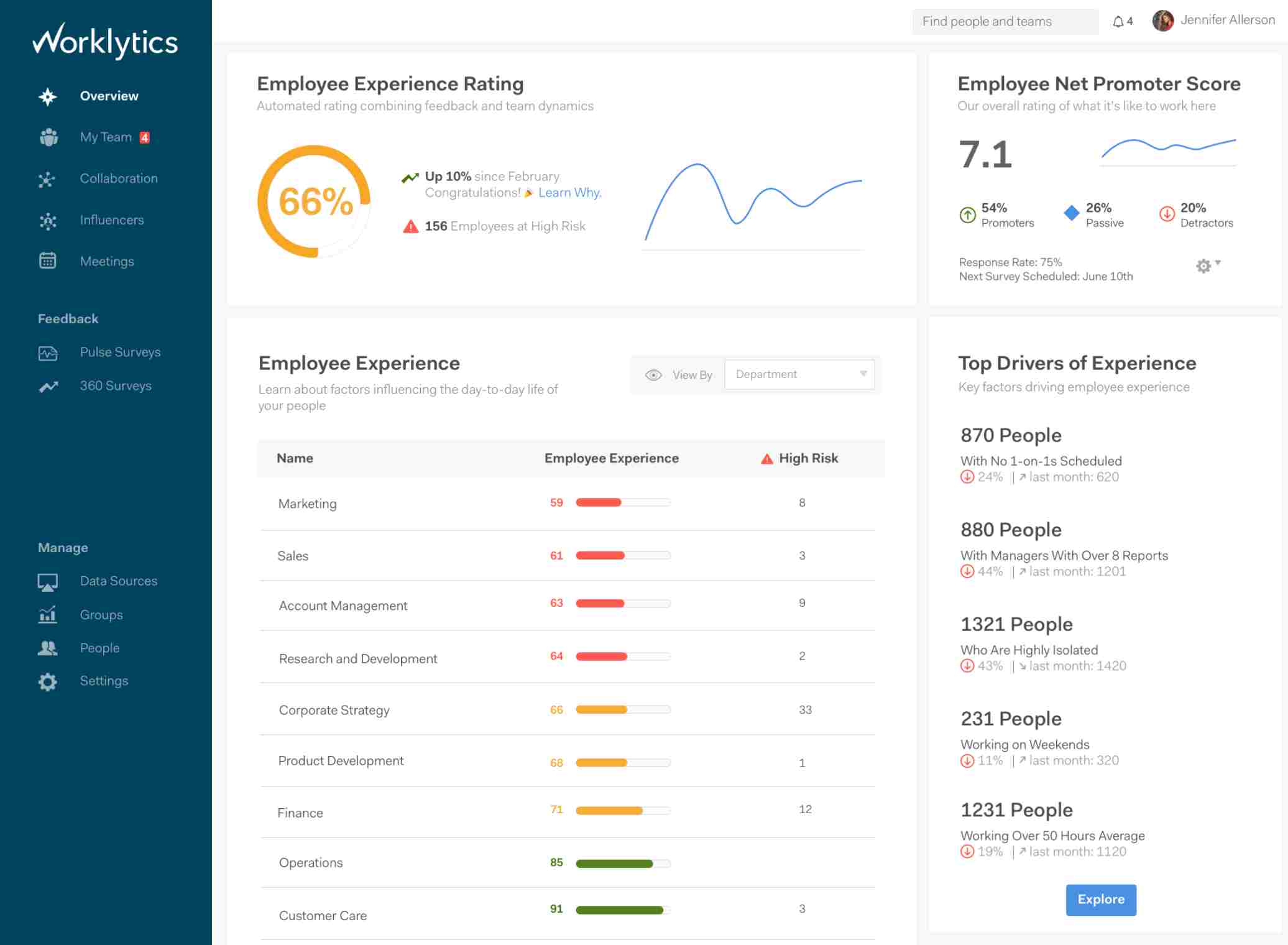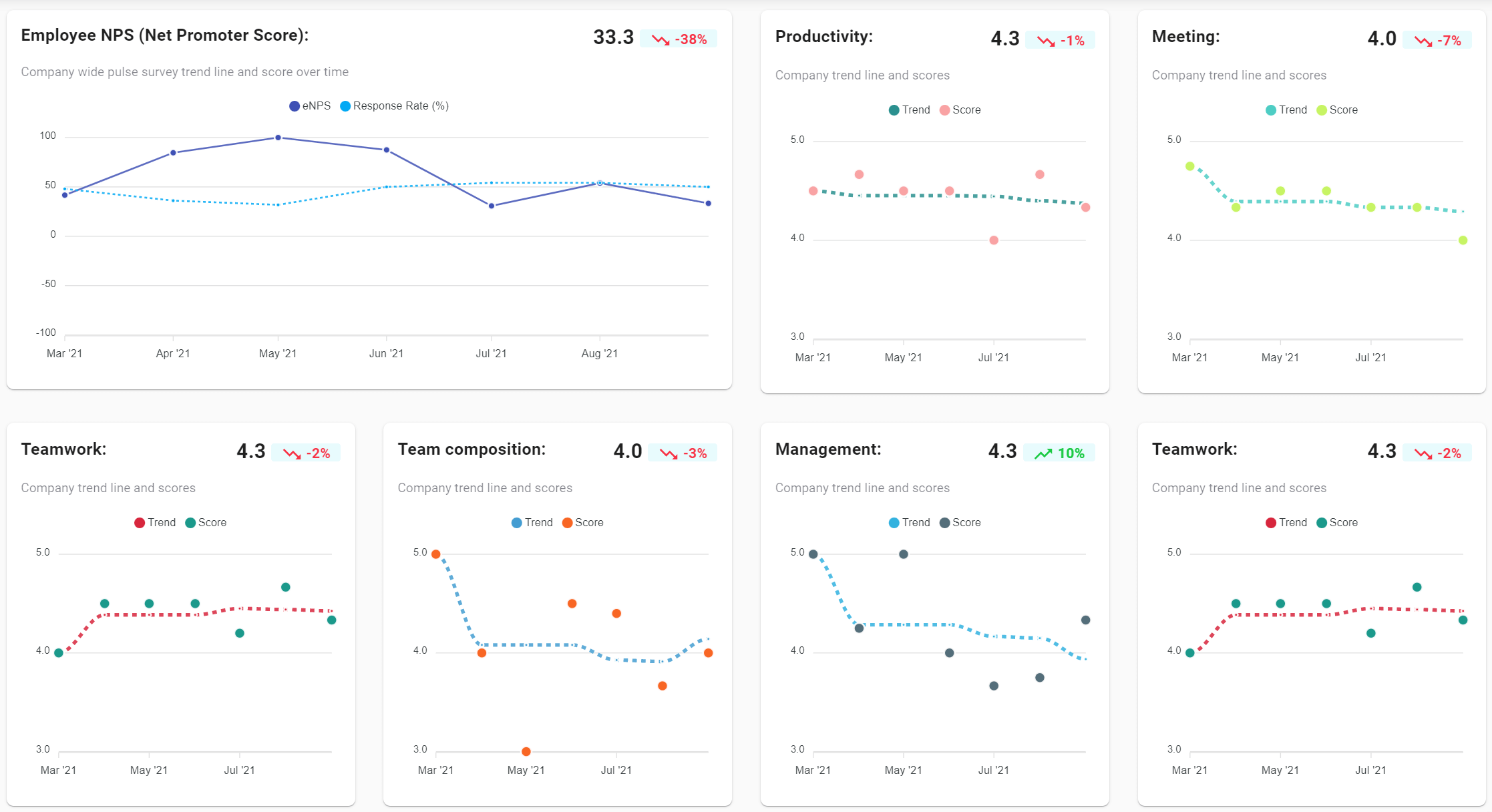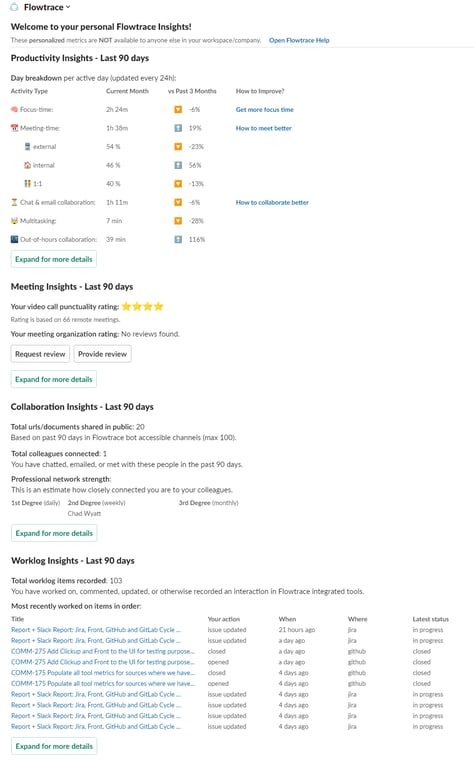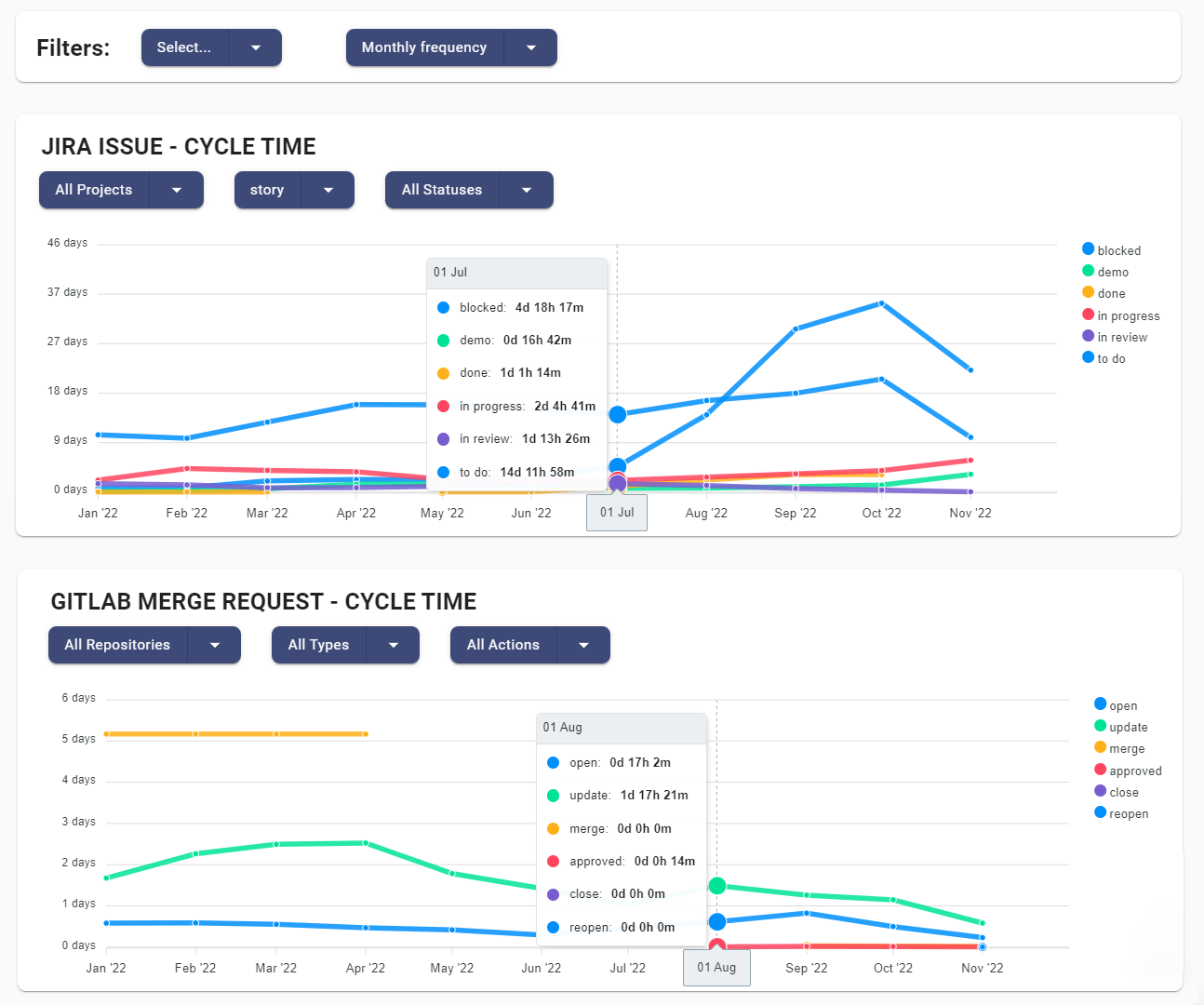Temporall alternatives
We look at a popular Temporall alternative, Flowtrace, to identify the key differences and which one would be better for your business.
This article takes a look at Worklytics alternatives, namely Flowtrace, and compares these two popular products to analytics who they are best suited to.
Have you been seeking an alternative to Worklytics or even other analytics tools? You have come to the right place. We are evaluating the core differences between Worklytics and Flowtrace, two products focused on analytics and data but meant for completely different end users.
Flowtrace offers data savy leadership teams, managers, and employees a thorough understanding of a company's internal workings through company analytics. Along with specialized organizational metrics, Flowtrace provides accurate data for communication, collaboration, meeting culture, productivity, and engagement. Management and leadership teams use this knowledge to comprehend how internal teams and processes function in order to streamline the organization.
Worklytics generates actionable insights from work data that aim to free up time to focus on more important tasks. They focus on the well-being of the workforce by understanding information such as burnout, length of the workday, overtime, and time spent in meetings, and also have the ability for custom metrics. Worklytics turns “anonymous work data into meaningful metrics and insights that improve the employee experience.” They break this down into different factors that cover management, employee lifecycle, collaboration & social influence, and more.

Flowtrace focuses on metrics that cover teams within the organization that is tailored for management and leadership. These company analytics cover different aspects including collaboration, productivity, meeting culture, and engagement, and also provide individual employees with their personalized data in private.
These real-time metrics are beneficial for those looking to understand internal processes, how teams function, identify efficiency gains throughout the organization and make data-driven decisions backed up by factual data. Aiming to remove bottlenecks from processes, improve inter-team relationships, and establish effective communication channels throughout.
 © Copyright Worklytics
© Copyright Worklytics
Worklytics pulls data from various sources and integrations, cleans that data, and displays it in a dashboard. They focus on metrics that are more driven to the use of HR and team leaders, in understanding employee and team well-being. They also have the option to create customizable dashboards and workflows for individual managers to create the exact dataset they need for employees.
Worklytics breaks data down into departments and creates trendlines for different metrics in addition to article-related suggestions on how different metrics impact teams and the organization. They have access to over 200 metrics defined in their data dictionary which splits various factors, such as meetings, into several separate metrics to understand more in-depth.
Flowtrace is focused on a complete set of company analytics for leaders and managers to understand the internal functions of their teams and organizations. Metrics are focused on different aspects of the internal workings of the business. These include collaboration, engagement, productivity, and meeting culture, and all come complete with leading recommendations you can action straight away.
Worklytics is focused on a variety of analytics that incorporates the data from tool integrations and looks at understanding employee well-being in addition to HR-related factors. They cover aspects such as meeting times, overtime worked, length of the workday, organizational data for communication, and many more.
Flowtrace gives leaders and employees the data they need to understand meeting culture including practices, costs, and meeting-level impact. This includes employees privately being able to see data for their meeting punctuality and exchange anonymous meeting feedback to the organizer. On the other hand, organizers and leaders can understand efficiency through meetings without an agenda, time spent in meetings, how many meetings start late, and more importantly, the impact late meetings have on cost.
Worklytics drills down into team meeting habits and looks at various data sets surrounding meetings to understand if teams and employees are overloaded or inundated with meetings. This includes looking at various metrics including meeting time vs workday length, how much time is spent in Zoom, meeting frequency, and even late start/end meetings. This data aims to help companies optimize meeting culture and encourage healthy collaboration across teams

Flowtrace dives deep into the inner workings of teams to understand their sentiment and efficiency within the organization. This is done by looking at inter-team relationships, engagement insights, and company sentiment, and allowing employees to have access to their own private data to understand how they impact the team. This is also supported by team surveys that can be tailored to teams and sent through Slack, to understand how employees are feeling backed up by factual and real-time data.
Worklytics helps users to understand the impact of workplace functions on employee health and how that impacts the organizations' functionality. They look at data such as the length of workday combined with the number of meetings to correlate if teams spend too much time in meetings, how much overtime is done by teams, trendlines on how many people have healthy workdays, use aggregated data to understand inclusion in the workplace, and also plot lines to understand the risk of burnout, allowing team leaders or HR to step in and prevent overworking.
Flowtrace doesn’t only focus on managers and leaders when it comes to data, employees also have access to their own private data. This provides employees with information on activity such as meeting insights, recent work logs, collaboration insights, workday breakdown, and punctuality scores for meetings. In addition to the employee surveys as mentioned before, this gives employees a comprehensive inclusion into the functions of their own teams; it gives them a voice and empowers them to take action.
Flowtrace also implements a meeting review feature where employees can give and receive feedback on meetings directly in Slack. This is entirely anonymous but it provides employees with the ability to self-improve.
Worklytics uses external survey data to plot and understand employee activity. The aggregate data from survey tools including Qualtrics, CultureAmp, Peakon, Lattice, and Glint with team dynamic data for an understanding of employee experiences. This helps team leaders and HR understand if any issues are present and if any underlying factors are impacting employee activity and efficiency.
Flowtrace is an app for both leaders and employees, that provides metrics for the functions of every department. It looks at team-level data and can be attributed and specified to sales teams with deal cycle times and Hubspot integrations, engineering teams with code review stages and Jira integrations, and also product teams with product cycle times. This data then works in turn with general team data on engagement, collaboration, and productivity.

Flowtrace provides real-time productivity insights and integrates directly with Slack to understand a range of different factors. These insights cover deep work insights, trends and industry benchmarks, collaboration insights, time spent communicating through various teams, out-of-hours work, and more.
Flowtrace also provides tailored recommendations through the app that provides leaders with insights into how to improve their team's efficiency, collaboration, productivity, and more. These recommendations are focused on immediate actions, short-term actions, and long-term actions.
Worklytics drills down into remote work and hybrid work data specifically. Thai looks at the distribution of remote team members, risk of isolation, focus time, and collaboration data. This is to help understand how employees in teams are spread out and if they have the necessary ‘organizational health’ capacity to perform in a remote environment.
Worklytics uses data pulled from other sources and integrations to produce predictive analytics reports. These reports help to identify the risk of burnout, impacts on employee stress, predicted productivity, and many more. They have many different charts and trend lines that are predictions based on external tool data.
If you are looking for an app suitable for leaders and managers, that employees can also be empowered by, then Flowtrace is a perfect choice. With actionable insights to understand the inner workings of your organization and make data-driven decisions, backed by real-time analytics, tailored recommendations, and external integrations.

If you are looking for a tool to understand your organizational health and predict employee feelings, sentiments, and trends, for HR and team leaders, then Worklytics is perfect for you. With over 200+ data sets and aggregation from external tools, you can understand how your employees and feeling and predict potential organizational health issues.
When it comes to these two products, it’s easy to make a decision based on what you are looking for. Flowtrace is more suited to technically savvy leaders and managers who want to run their teams more efficiently whereas Worklytics is suited to team leaders and HR who want to understand the health of their employees.
We look at a popular Temporall alternative, Flowtrace, to identify the key differences and which one would be better for your business.
Discover Peoplelogic alternative where we will take a look at Flowtrace VS Peoplelogic to compare both products and how they suit your needs.
Time is Limited alternative: Flowtrace VS Time is Limited - two great tools that serve different purposes for company analytics and management...